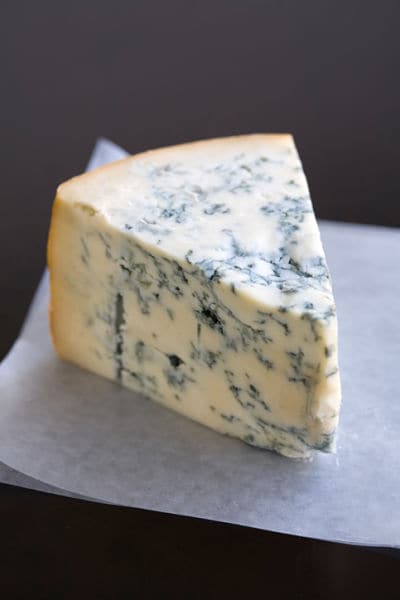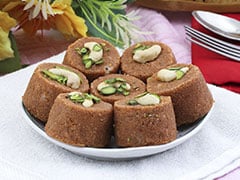Blue Cheese
Blue vein cheese, or blue cheese is a generic term given to the type of cheese produced from cows milk, goats milk or sheeps milk and ripened with the arbitration of the mould Penicillium. It is produced by the coagulation of milk and ageing of cheese.
- NDTV Food
- Nov 21 2014 17:17 IST

Blue vein cheese, or blue cheese is a generic term given to the type of cheese produced from cow's milk, goat's milk or sheep's milk and ripened with the arbitration of the mould Penicillium. It is produced by the coagulation of milk and ageing of cheese. Blue cheese carries a distinct smell cultivated from the bacteria residing on the cheese. In many European countries, blue cheese is named carrying the designation of its origin.
It is believed that blue cheese originated when cheese was stored in moisture and temperature controlled caves. Instead of getting spoilt, the cheese developed a blue colour with a distinctive taste.
The cheese is characterized by the blue, blue-gray or blue-green-mold spots throughout the body. The veins are created by spiking cheese with stainless steel rods letting the oxygen flow and favouring the growth of mould. Blue cheese has a sharp salty taste caused mainly due to the mould and bacteria settlement on the cheese.
Usage
Blue cheese can be used either raw or melted over foods. It tastes best when served alongside raisins, pears, walnuts and fruit breads. Crumbled cheese is used as a dressing, balancing bitter greens in salads.
Nutritional Value
1. Blue cheese is a cheese variety with low calorie content.
2. The anti-inflammatory properties of blue cheese helps the arteries function properly.
3. It stimulates brain cells and improves memory.
Did you know?
The first blue cheese variety was discovered in AD 79.




